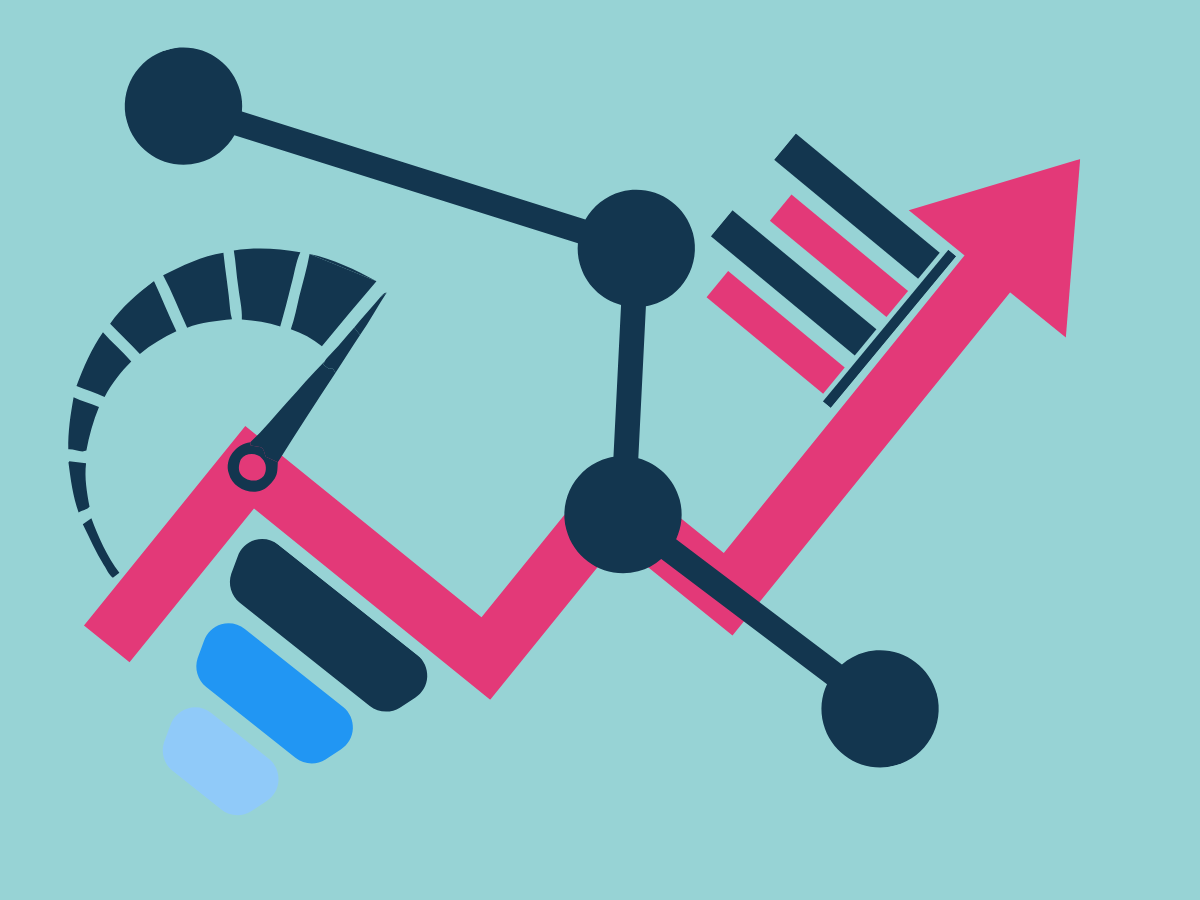The RevLifter guide to the eCommerce funnel

Have you ever wondered why some visitors to your online store seem to vanish into thin air? You’re not alone.
Understanding and optimizing the eCommerce funnel is crucial for turning casual browsers into loyal customers.
What is the eCommerce funnel?
The eCommerce funnel visually represents a potential customer's stages before purchasing. Think of it as a roadmap guiding a random visitor to become a repeat buyer.
Each stage of the funnel presents unique opportunities—and challenges—that can make or break your sales.

The funnel stages defined
Potential customers
This is where everyone starts. Your potential customers are people who may or may not have heard of your brand but are interested in what you offer.
The goal is to capture their attention and make them curious enough to visit your website.
Key metric: Brand awareness
Brand awareness reflects how well potential customers recognize and recall your brand. High brand awareness means your target audience knows who you are and what you stand for, which is essential for driving traffic to your site.
Visit website
This stage is where your SEO, social media, and advertising efforts pay off. A potential customer lands on your website, and your job is to engage them quickly.
Key metric: Website traffic and sources
Website traffic is a vital indicator of the effectiveness of your marketing strategies. It reflects the number of visitors to your site and can provide insight into which sources effectively drive that traffic.
View products
Hooray! They’ve stuck around long enough to browse your products. This stage is critical because it determines whether they’ll add anything to their cart. Clear, high-quality images and concise product descriptions are your best friends here.
Key metric: Product and category page visits
Tracking visits to your product and category pages is essential to understanding how effectively you capture interest. High traffic on specific pages can highlight popular items or emerging trends, allowing you to tailor your marketing efforts accordingly.
Add to cart/basket
This is where things get exciting. Customers like what they see and add items to their carts. But hold your horses—this doesn’t mean they’ll buy just yet.
Key metric: Cart/basket abandonment rate
The cart abandonment rate measures the percentage of shoppers who add products to their cart but leave without completing the purchase. This rate can tell you a lot about the effectiveness of your checkout process and overall customer experience.
Go to checkout
Customers reaching this stage are serious about buying. But the process isn’t over yet. A complicated checkout process can still turn them away.
Key metric: Checkout abandonment rate
A high checkout abandonment rate can stem from unexpected shipping costs, complex forms to fill out, or even a lack of payment options. By monitoring and understanding this metric, you can identify roadblocks in your process and make the necessary adjustments to enhance the customer experience.
Purchase
Victory! The customer has made a purchase. But don’t pop the champagne just yet. This is only the beginning of a hopefully long-term relationship.
Key metrics: Conversion rate and Average Order Value (AOV)
The conversion rate tells you the percentage of visitors who complete a purchase. It's a vital indicator of how well your funnel is performing.
On the other hand, average order value (AOV) measures the average amount customers spend per transaction. It's essential because increasing AOV can significantly boost your overall revenue without requiring more traffic to your site.
Repeat purchase
Ah, the big one in eCommerce. Getting a customer to return and buy again is far more cost-effective than acquiring a new one. Engaging them with personalized offers and promotions is critical to achieving this.
Key metric: LTV (Lifetime Value)
LTV is a calculation that estimates the total revenue a customer will generate during their relationship with your brand. A higher LTV indicates that you've fostered a strong relationship with your customers, meaning they keep returning for more.
Average conversion rates between funnel stages
Understanding the average conversion rates at each funnel stage helps set realistic expectations.
Here’s a quick rundown:
- Potential to Visit website: 2-4%
- Visit website to View products: 8-20%
- View products to Add to Cart: 10-15%
- Add to Cart to Go to checkout: 35-50%
- Go to checkout to Purchase: 60-80%
- Purchase to Repeat purchase: 20-30%
These numbers vary widely depending on the industry, target audience, and marketing strategies. However, they provide a valuable benchmark for evaluating your performance.
What a lower conversion rate at each funnel stage can mean
A lower conversion rate at any stage indicates a problem that needs solving. For example:
- Low Visit to View Products: Your website might be confusing or slow.
- Low View to Add to Cart: Product descriptions or images might be lacking, or pricing might be off-putting.
- Low Add to Cart to Checkout: Your checkout process could be too complicated or a high-consideration purchase.
- Low Checkout to Purchase: There may be issues with payment options or trust signals, or customers might find better prices or deals elsewhere.
Identifying these bottlenecks early allows you to make data-driven improvements.
How to address low conversion rates
Onsite promotions can be game-changers for every stage of your funnel. Let's look at some actionable tips:
1. Capture potential customers with attractive offers
Use pop-ups or banners to offer first-time visitors a discount or free shipping.
2. Engage website visitors
Interactive elements like quizzes or website hunts can keep visitors engaged longer. The longer they stay, the higher their chance of browsing your products.
3. Enhance the product viewing experience
High-quality images and videos showcasing your products can significantly boost the "View Products" stage. Include customer reviews and ratings to build trust.
4. Encourage adding to cart
Offer limited-time discounts or bundle deals to create urgency. According to research by the Baymard Institute, 48% of shoppers abandon carts due to high extra costs.
5. Simplify the checkout process
Streamline your checkout process to minimize friction. Use progress indicators and allow guest checkouts to make the process as smooth as possible.
According to Baymard Institute research, 21% of online shoppers abandon their carts due to a complicated checkout process.

6. Secure the purchase
Offer multiple payment options, including digital wallets like PayPal and Apple Pay. Ensure your site is secure and displays trust badges prominently.
7. Foster repeat purchases
Retarget existing customers with personalized offers and loyalty programs.
Wrap up
Optimizing your eCommerce funnel is not just about increasing conversions; it's about creating a seamless and enjoyable shopping experience for your customers. Understanding each funnel stage and implementing targeted promotions and offers can significantly boost your revenue and foster customer loyalty.
Frequently Asked Questions (FAQs) about the eCommerce funnel
What is the most effective way to reduce cart abandonment rates?
Implementing precise, upfront shipping costs and simplifying the checkout process can significantly reduce cart abandonment. Offering guest checkouts and multiple payment options also minimizes customer friction. Dynamic, relevant promotions also improve conversion rates throughout the funnel.
How can I increase the Average Order Value (AOV) without deterring customers?
You can boost AOV by introducing upsell and cross-sell opportunities at checkout, creating product bundles, or offering discounts on higher purchases. This encourages customers to spend more while feeling like they’re receiving added value.
What are some strategies for improving conversion rates from product view to add-to-cart?
Improving product descriptions and imagery, displaying customer reviews, and providing competitive pricing and promotions can entice visitors to add items to their carts. Highlighting the benefits and unique features of products also plays a crucial role.
How does understanding customer Lifetime Value (LTV) benefit my business?
By understanding LTV, you can allocate resources more effectively and focus on retaining valuable customers. It aids in tailoring marketing strategies to nurture long-term relationships and enhance customer satisfaction, leading to substantial revenue growth.
What tools can help track these eCommerce metrics effectively?
Tools like Google Analytics, Shopify Analytics, customer relationship management (CRM) systems, and analytics in promotion management tools offer comprehensive insights into these metrics. They provide data-driven insights to help optimize each stage of your funnel and identify improvement areas promptly.






